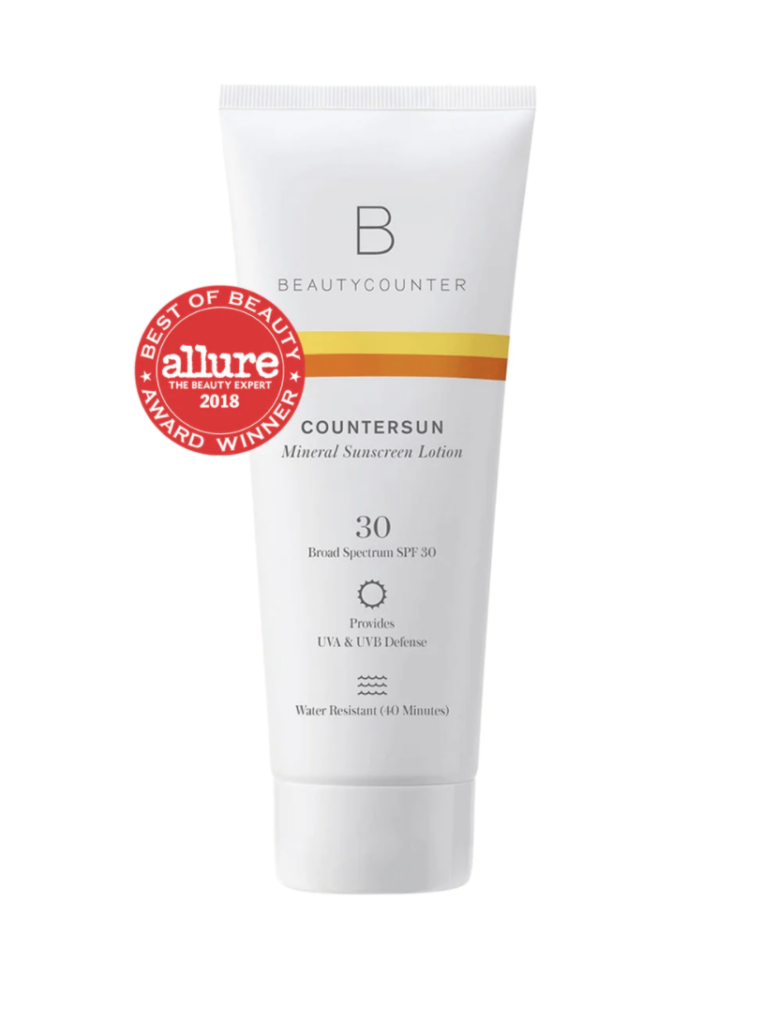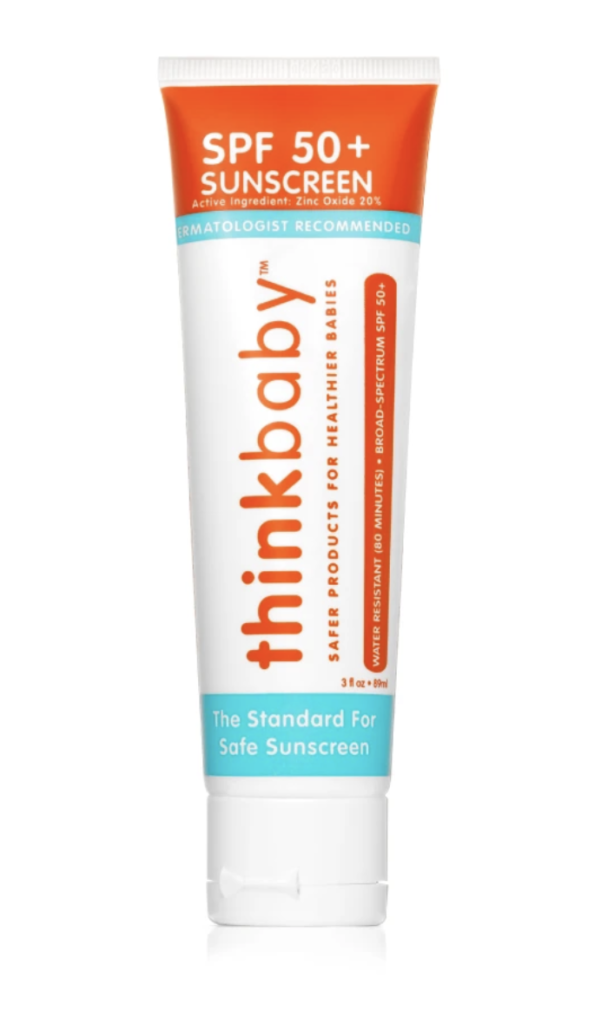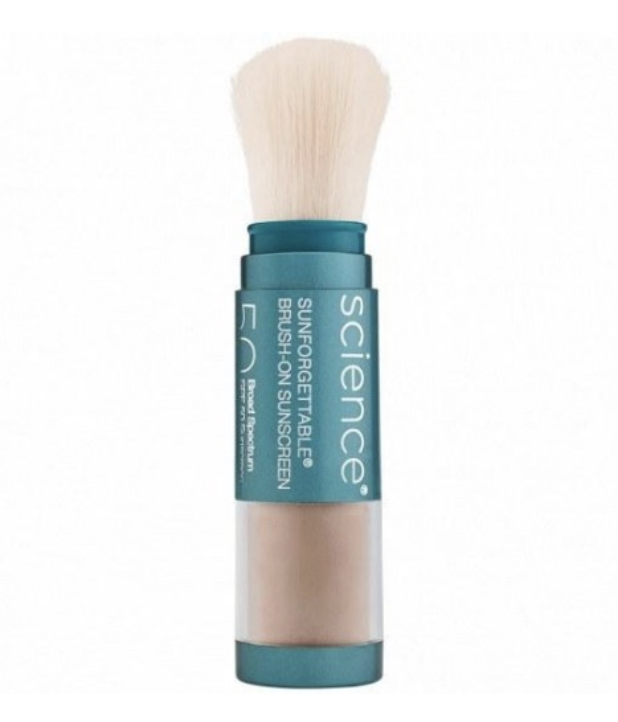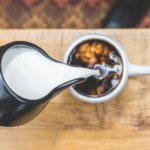
Boy have we been lucky to have enjoyed so much sunshine this April! As beautiful as it is outside, we cannot forget how important it is to care for our skin before we get outside, and even indoors; Harmful UVA and UVB rays can penetrate through glass so if you have beautiful floor to ceiling windows (we are jealous!), you may want to add SPF to your daily routine even during isolation. It is also important to remember that the dangerous UVA and UVB rays do not get filtered out by clouds, so even if it is cloudy and dreary outside and no sunlight is getting through, our skin is still susceptible to damage. Okay, but which level of SPF should you choose? For everyday activities with just a few minutes in the sun here and there, SPF 15 will suffice, but for extended periods, go for SPF 30 or higher. SPF 15 blocks 93% of UVB rays, while SPF 30 blocks 97% of UVB rays and SPF 50 blocks 98% of UVB rays. Look for “broad spectrum” on labels, as this means that the product protects from UVA rays as well as UVB rays.
Reapply, reapply, reapply! Sunscreen should be applied liberally and rubbed into the skin well. The rule of thumb is about a nickel-sized amount for the face, and about two tablespoons of product for the body. It can be easy to miss some spots on our body, especially on our backs when applying a lotion type SPF, so if you may find yourself relaxing in the sun alone, or if rubbing lotion all over feels like a bigger ordeal than it should, consider purchasing a spray version of SPF. There are many options of sunscreen in a bottle with a continuous spray, making reapplication a breeze. In order to keep ourselves protected throughout the day, sunscreen should be reapplied every 2-3 hours of sun exposure, or after swimming, vigorous sweating, or any other activities that may remove the sunscreen from the skin.
But what about makeup? If you are someone who likes to wear makeup, the idea of applying a wet lotion to your face just two hours after putting the work into creating a flawless face may not sound realistic. Luckily, there are a few options for tackling this issue. Because of strict regulations around SPF in Canada, it is not easy to find makeup products containing SPF, especially anything higher than SPF 15. However, there are several tinted moisturizers on the market that do contain higher strength SPF, so if you prefer lighter coverage, this may be a product to look into. If you prefer a regular foundation, there are still ways to protect yourself. You will want to apply an SPF 30 or higher sunscreen before makeup no matter what. To continue to protect your skin throughout the day, you can purchase a powder sunscreen to easily reapply every 2-3 hours over your makeup (I will link a great one below). Wearing sunglasses and a wide-brimmed hat that fully shields your face is also an excellent idea.
So… what’s the difference between chemical and physical sunscreen? Both types of sunscreen protect our skin from harmful UV rays, but they do their job differently and carry their own pros and cons.
Chemical sunscreens work by absorbing the sunlight and scattering the rays. They contain synthetic active ingredients such as avobenzone, octinoxate, oxybenzone, or octisalate. The positives of chemical sunscreen are that less product is needed, as there is no risk of spaces between the sunscreen molecules after application, and chemical sunscreen products tend to be thinner and spread out more easily on the skin. The downsides of chemical sunscreen are: requiring about 20-30 minutes before sun exposure after application, increased chance of irritation and stinging due to multiple ingredients combined to achieve broad-spectrum protection, the need for more frequent reapplication, and the potential of clogging pores forepeople with oily skin.
Physical sunscreens work by bouncing the sun’s rays off skin, almost like a mirror. Their active ingredients are usually Titanium Dioxide or Zinc Oxide, which are naturally occurring minerals. Here are the pros of this type of sunscreen: no need to wait before sun exposure after application, it can last longer in direct sunlight than chemical sunscreen (unless it gets wet), less likely to cause irritation to the skin or be pore-clogging, and has a longer shelf life. The cons: rubs/sweats/rinses off easily (meaning frequent reapplication is necessary when participating in outdoor activities), has a tendency to leave a white cast on the skin that could be especially unpleasant for people of colour, and it can be less protective if not applied and reapplied generously and accurately since there is the risk that UV light can get between the sunscreen molecules when applied too thinly.
Natural, please. What does “natural” even mean when it comes to products? Typically it implies that it’s made with minimally-modified ingredients found in nature. There are no regulations on the term natural, so it’s up to us to be savvy consumers and dig deeper into reading labels.
Here is a list of ingredients that you may want to avoid, especially if you prefer more “natural” products, or if you have sensitive skin:
Oxybenzone
An ingredient that can affect hormones and allergies in humans
Parabens
A class of preservatives commonly used to prevent the growth of bacteria and mold. Parabens are endocrine (or hormone) disruptors, which may alter important hormone mechanisms in our bodies. Found in: shampoo, face cleanser, body wash, body lotion, foundation.
Benzalkonium Chloride
A disinfectant used as a preservative and surfactant associated with severe skin, eye, and respiratory irritation and allergies. Found in: sunscreens, moisturizers.
Ethanolamines (MEA/DEA/TEA)
Surfactants and pH adjuster linked to allergies, skin toxicity, hormone disruption, and inhibited fetal brain development. Found in: hair dyes, mascara, foundation, fragrances, sunscreens, dry-cleaning solvents, paint, pharmaceuticals.
Polyethylene glycol (PEG compounds)
PEGs are widely used in cosmetics as thickeners, solvents, softeners, and moisture-carriers. Depending on manufacturing processes, PEGs may be contaminated with measurable amounts of ethylene oxide and 1,4-dioxane, which are both carcinogens. Found in: creams, sunscreen, shampoo.
Synthetic flavour or fragrance
An engineered scent or flavoring agent that may contain any combination of 3,000-plus stock chemical ingredients, including hormone disruptors and allergens. Fragrance formulas are protected under federal law’s classification of trade secrets and therefore can remain undisclosed. Found in: all types of cosmetics.
Here are some “clean beauty” sunscreen products that we recommend:

Pacifica Beauty
This is a lovely multi-use physical sunscreen product meant specifically for the face. This product offers a bronzing tint, but Pacifica also offers over a dozen different SPF products with different scents, SPF levels, multi-uses, and bottle sizes. Their products are vegan and cruelty-free and formulated without petroleum, parabens, silicones, retinyl palmitate, phthalates and chemical UV absorbers, chemical UV absorbers, PABA, octisalate, octinoxate, and oxybenzone. Mineral Bronzing Face Shade Coconut Glow

SPF 30
BeautyCounter
This product is an excellent choice for a physical SPF 30 sunscreen with no bells and whistles. Beautycounter is known for their rigorous ingredient screening process, so you can rest assured that their sunscreen will not contain any questionable ingredients. The company claims that despite being a physical sunscreen, this product leaves much less white residue than other physical sunscreens on the market. If you have darker skin and are still hesitant about a slight white cast, Beautycounter also offers a tinted version of this sunscreen that may better suit your needs. https://www.beautycounter.com/en-ca/product/countersun-mineral-sunscreen-lotion-spf-30

SPF 30
All Good
This SPF 30 physical sunscreen is an excellent option for a continuous spray product that is fast and easy to apply. https://allgoodproducts.com/spf-30-sport-mineral-sunscreen-spray-6-oz/

ThinkBaby/ThinkSport
If you are looking for a higher SPF option, this dermatologist-recommended physical sunscreen from Think Sport may be a top contender. This brand stresses the importance of only using the safest ingredients, and sp sensitive skin should not have issues with this product. https://gothink.com/products/thinkbaby-safe-sunscreen-spf-50-6oz-family-size-95

Color Science
For the makeup wearers! This physical SPF 50 product is a godsend, as it is convenient, easy to apply, and can be used alone or over makeup. It comes in four shades claims to be hypoallergenic and non-comedogenic, and all ColorScience products are free from parabens, phthalates, synthetic fragrance, animal testing, talc, dyes, mineral oils, and drying alcohols. https://beautysense.ca/colorescience-sunforgettable-enviroscreentm-protection-brush-on-shield-spf-50.html?gclid=CjwKCAjw-YT1BRAFEiwAd2WRtvh7WeBlyukx82zH1L2amTnpUUf0cl06xRAn1hPCosplZV3pRGrsTxoCvqsQAvD_BwE#ratings-reviews
Other things to consider…
We hope this blog post has been helpful in navigating the vast world of sunscreens! There is just one more thing that is very important to remember when it comes to sun protection. Shielding yourself completely from UV rays is the most effective way to avoid sun damage and skin cancer, so consider wearing sunglasses and a wide-brimmed hat regularly, covering up in the sun with longer clothing and sitting in the shade as much as possible. According to dermatologists, it is best to avoid being out in the sun between 11 am and 3 pm, as this is when the UV rays are harshest. Being mindful about how you are spending the day, covering up when possible, and always wearing sunscreen (properly) will help prevent skin and eye damage, immune system suppression, and skin cancer. Be diligent and stay safe!
Sources: https://www.beautycounter.com/en-ca/the-never-list https://www.goodhousekeeping.com/beauty/anti-aging/tips/g256/natural-sunscreens-460608/ https://forefrontdermatology.com/chemical-vs-physical-sunscreen/ Natural Sunscreen 101: Everything You Need to Know Sun Safety for Every Day
Leave a Comment
You must be logged in to post a comment.



0 Comments